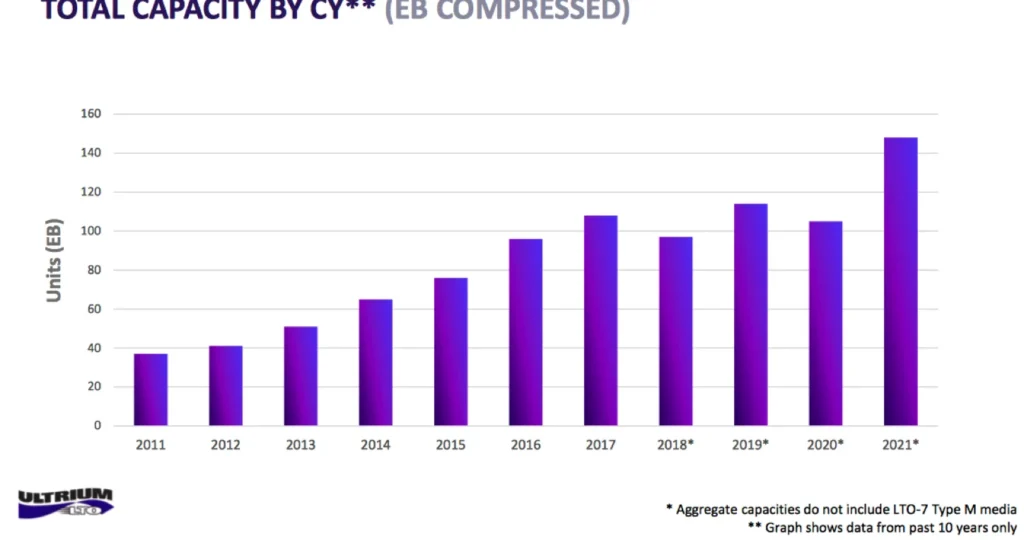
Before the fast and convenient storage that today is limited to the cloud and hard disk drives, better known as HDs, computers only had a single option for this purpose in the 90’s. were playing back then and were patiently waiting for the game to load. Like every old invention, magnetic storage hasn’t disappeared either. On the contrary, the resource has seen an increase thanks, in part, to ransomware attacks.
The slowness of magnetic tapes was one of the biggest arguments for hard disk drives (HDDs) to take their place. Now solid state drives (SSD) are ready to supplant HDDs for precisely the same reason: speed. Despite being slow, LTO (Linear Tape-Open) devices, which emerged in the 90s, are still in use by many companies around the world.
The reason? LTO drives are mainly used as a backup solution for storage as they are too slow for any other type of activity. For many public and private companies, offline backup is still the safest option for copying data. Despite harking back to the bygone era, LTO cassettes don’t resemble the old Commodore cassette drive. The latest LTO 9 cartridges can store up to 45 terabytes of data.
Ransomware attacks and the future of data storage
In the last year, companies such as HP, IBM and Quantum have reported that more than 148 exabytes of tape have been sold. The number is responsible for the record increase in sales of LTO solutions.
Up 41% from 2020 and up 30% from the previous record of 114 exabytes sold in 2019, according to information from Sweclockers.com.
The Swedish publication claims that the increase in magnetic media sales is related to cybersecurity: the increase in ransomware attacks. The difference between keeping data in the cloud and using LTO drives is explained by the latter creating a kind of ’empty space’ in the storage, as the device is offline.
Being virtually unavailable is a way to not have your data encrypted or destroyed in a ransomware attack. The only way to do this would be for the attacker to find the location where the LTO is stored by copying or erasing the data from numerous cassettes. An impractical and time-consuming process.
If, on the one hand, restore speed is the enemy of primary adoption for backup, on the other hand, it can help or even prevent a company from joining the thousands of other ransomware victims. In addition, being able to choose a location far from the company’s activities to store it will protect data from being lost in fire or natural disasters.
Via TechSpot



